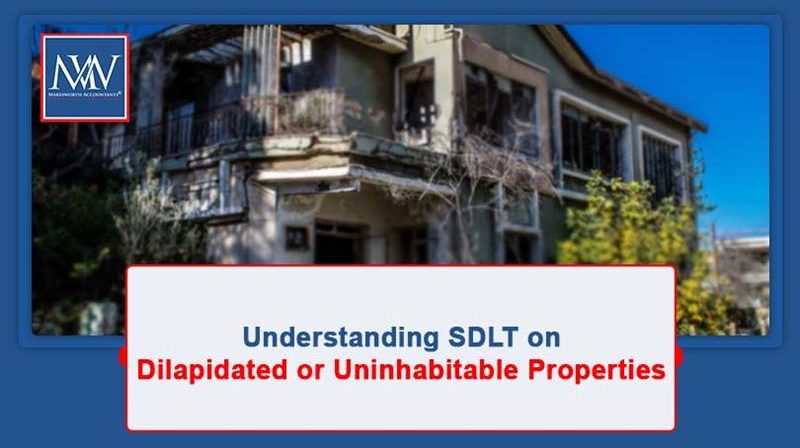
Understanding SDLT on Dilapidated or Uninhabitable Properties
Overview
The rate of Stamp Duty Land Tax (SDLT) payable when buying a property depends on whether it’s classed as residential or non-residential — and, if residential, whether the higher rates apply.
Since residential SDLT rates are often much higher, some buyers have tried to argue that a run-down or uninhabitable property should be treated as non-residential. However, following a recent Court of Appeal decision in Amarjeet and Tajinder Mudan v HMRC [2025] EWCA Civ 799, HMRC has cautioned against making such refund claims. The ruling clarifies what qualifies as a residential property for SDLT purposes and why most claims based on “uninhabitability” are unlikely to succeed.
The Case: Mudan v HMRC
In this case, the buyers paid SDLT at residential rates. Later, their tax agent filed a refund claim, arguing the property’s poor condition meant it wasn’t “suitable for use as a dwelling” and should therefore be taxed as non-residential.
The Court of Appeal disagreed. It confirmed the earlier decision by the Upper Tribunal that, even though the property needed significant repairs, it still counted as a residential property. As a result, SDLT remained payable at the residential rates.
Key Takeaways from the Court’s Decision
The Court clarified several important points about what makes a property “suitable for use as a dwelling”:
-
Immediate occupation isn’t required. A property doesn’t have to be move-in ready to qualify as a dwelling.
-
Structural soundness matters most. What’s important is whether the property retains the core characteristics of a dwelling — for example, having walls, a roof, doors, and windows in place.
-
Past use as a home is relevant. If the property has been used as a dwelling before, that supports its continued classification as residential.
-
Assessing the defects. Only if the defects are so severe that the property no longer functions as a home could it fall outside the definition of a dwelling.
HMRC’s Position on Uninhabitable Dwellings
HMRC emphasises that only a very small number of properties are so damaged or deteriorated that they lose their status as dwellings. Each case depends on its facts, but HMRC frequently challenges refund claims based on “uninhabitability” — and wins the majority of them.
Even major renovations or repairs — such as removing bathrooms or kitchens, fixing structural damage, damp proofing, rewiring, or replacing plumbing — do not make a building unsuitable for use as a dwelling. As long as it remains fundamentally capable of being lived in, SDLT is still due at the residential rates.
Final Thoughts
This ruling serves as a reminder for buyers and advisers to be cautious when considering SDLT refund claims on the basis that a property is uninhabitable. Unless the property has lost all the essential features of a dwelling, it will almost certainly be treated as residential — and taxed accordingly.
For more information, Book a Free Consultation
Need Accountancy Support?
For information on bespoke training, or if you have any other questions for Makesworth Accountant, please fill in your details below
















 151
151